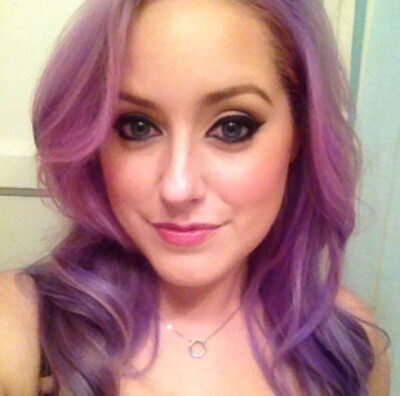How much do you think about government regulation while you’re looking for a new shampoo or moisturizer? Not much, I’d wager. And why would you? We should all be able to trust that our government has a standard of safety that protects us from exposure to toxic chemicals in our personal care products. I think most of us believe that’s the case.
Unfortunately, the United States has incredibly low standards for cosmetic and personal care product safety. As a matter of fact, our federal government only restricts 11 ingredients from being used in cosmetic products. Europe, on the other hand, has banned over 1300.
It’s been decades since our government has bothered to update the two most relevant laws regulating consumer safety in the cosmetics industry – the Federal Food, Drug, and Cosmetic Act (FD&C Act) of 1938 and the Fair Packaging and Labeling Act (FPLA) of 1967 [2][3]. Since the law endows the FDA with oversight, you’d think the FDA actually approves the products that are made available to the public.
The truth is, they don’t.
According to the FDA’s own website the responsibility for ensuring the safety of products falls to the companies making them: “Companies and individuals who manufacture or market cosmetics have a legal responsibility to ensure the safety of their products. Neither the law nor FDA regulations require specific tests to demonstrate the safety of individual products or ingredients. The law also does not require cosmetic companies to share their safety information with FDA.” [1] Also, beauty product ingredients are investigated by a voluntary panel called the Cosmetic Ingredient Review. The fact that the beauty industry is essentially allowed to oversee itself is beyond disturbing.
In an attempt to crack down on this free-for-all, Representative Jan Schakowsky (D-IL) introduced a sweeping bill: H.R.4296 Safe Cosmetics and Personal Care Products Act of 2019 [4] to overhaul this outdated – and frankly – dangerous system. While it’s nowhere near as stringent as the health and safety laws in the EU, it is a huge step forward. First and foremost, it outlaws a huge number of toxic chemicals, both individually and those under umbrellas of ingredients: Benzophenones, BHT, Coal tar dyes, Cocamide DEA, DBP and DEHP phthalates, Toluene, Styrene/Styrene acrylates, Formaldehyde/Formaldehyde-releasers, Triclosan, Lead acetate/lead compounds, and Parabens (all of these ingredients and hundreds more are encompassed in our Never MadeWith List). But, H.R.4296 doesn’t stop there!
Other requirements:
- Labeling must include the ingredients in fragrance blends
- A new safety standard for ingredients (specifically with protections for pregnant women, babies & children, and highly exposed workers)
- Pre-market safety testing of new products by the FDA
- The FDA must safety test a minimum of 30 ingredients in the first 2 years (10 each year after)
- Funding for research grants to design safer products that disproportionately affect salon workers and people of color
- Bans animal testing on completed products
- Mandates that facilities are registered with the FDA
- Standardized manufacturing practices
- Public access to reporting on adverse events
- An end to confidential business information on ingredients
- Mandated interagency cooperation between FDA, NIEHS, OSHA, CDC and EPA
- Support for small businesses to be able to comply with new requirements
- Protections for states that want to regulate beyond the federal requirements
- Funding to the FDA to accommodate the new requirements
- FDA recalls of tainted or mislabeled products
All of these amazing new requirements would be game changers for the safety of US cosmetic and personal care products. Unfortunately, while this bill has made its way to committee, it is collecting dust in political purgatory (at least for the time being).
The last action on H.R.4296 – the Safe Cosmetics and Personal Care Products Act – was in September of 2019. And, the reason should not come as a shock to anyone. The last two years of United States politics has been so mired in partisan battles that bills like this one are likely to be a long time waiting. But, there is something we can do. If you feel as passionately about this issue as we do here at MADEWITH, make your voice heard! Contacting your local representative can bring focus back to this bill, especially if enough of us speak up. Every little bit helps! To contact your congressperson click here:
https://www.house.gov/representatives/find-your-representative
In the meantime, MADEWITH will do all we can to take steps to ensure the products you’re putting on your skin are not riddled with ingredients that have been banned in other countries – countries that have made the health of their citizens a right, rather than a profitable business.
—
Articles cited:
[1] FDA. FDA Authority Over Cosmetics: How Cosmetics Are Not FDA-Approved, but Are FDA-Regulated. https://www.fda.gov/cosmetics/cosmetics-laws-regulations/fda-authority-over-cosmetics-how-cosmetics-are-not-fda-approved-are-fda-regulated#Can_FDA_inspect
[2] FDA. Federal Food, Drug, and Cosmetic Act (FD&C Act). (1938). https://www.fda.gov/regulatory-information/laws-enforced-fda/federal-food-drug-and-cosmetic-act-fdc-act
[3] FTC. Fair Packaging and Labeling Act: Regulations Under Section 4 of the Fair Packaging and Labeling Act. (1967). https://www.ftc.gov/enforcement/rules/rulemaking-regulatory-reform-proceedings/fair-packaging-labeling-act-regulations-0
[4] The United States House Of Representatives. H.R.4296 – Safe Cosmetics and Personal Care Products Act of 2019. (2019). https://www.congress.gov/bill/116th-congress/house-bill/4296?s=1&r=1
[5] FDA. FDA Summary of Cosmetics Labeling Requirements. https://www.fda.gov/cosmetics/cosmetics-labeling-regulations/summary-cosmetics-labeling-requirements#Cosmetic_Labeling



One thought on “The Safe Cosmetics & Personal Care Products Act of 2019”
Comments are closed.